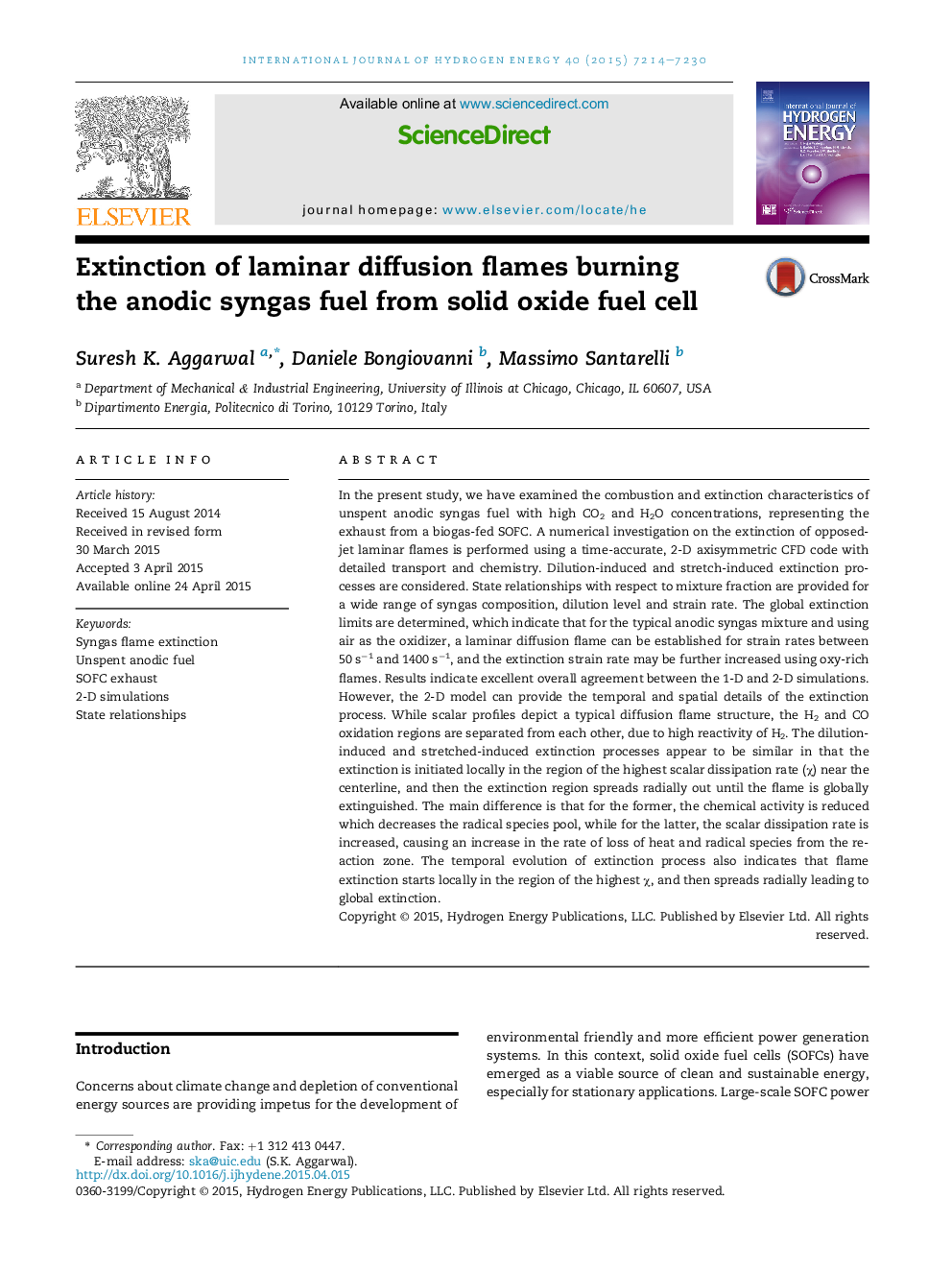| کد مقاله | کد نشریه | سال انتشار | مقاله انگلیسی | نسخه تمام متن |
|---|---|---|---|---|
| 1279904 | 1497451 | 2015 | 17 صفحه PDF | دانلود رایگان |
• Extinction behavior of unspent anodic syngas fuel is numerically investigated.
• Unspent anodic fuel is representative of the exhaust from a biogas-fed SOFC.
• Opposed-jet laminar flames are simulated using a time-accurate, 2-D CFD code.
• Dilution-induced and stretch-induced extinction processes are examined.
• State relationships and temporal evolution of extinction process are provided.
In the present study, we have examined the combustion and extinction characteristics of unspent anodic syngas fuel with high CO2 and H2O concentrations, representing the exhaust from a biogas-fed SOFC. A numerical investigation on the extinction of opposed-jet laminar flames is performed using a time-accurate, 2-D axisymmetric CFD code with detailed transport and chemistry. Dilution-induced and stretch-induced extinction processes are considered. State relationships with respect to mixture fraction are provided for a wide range of syngas composition, dilution level and strain rate. The global extinction limits are determined, which indicate that for the typical anodic syngas mixture and using air as the oxidizer, a laminar diffusion flame can be established for strain rates between 50 s−1 and 1400 s−1, and the extinction strain rate may be further increased using oxy-rich flames. Results indicate excellent overall agreement between the 1-D and 2-D simulations. However, the 2-D model can provide the temporal and spatial details of the extinction process. While scalar profiles depict a typical diffusion flame structure, the H2 and CO oxidation regions are separated from each other, due to high reactivity of H2. The dilution-induced and stretched-induced extinction processes appear to be similar in that the extinction is initiated locally in the region of the highest scalar dissipation rate (χ) near the centerline, and then the extinction region spreads radially out until the flame is globally extinguished. The main difference is that for the former, the chemical activity is reduced which decreases the radical species pool, while for the latter, the scalar dissipation rate is increased, causing an increase in the rate of loss of heat and radical species from the reaction zone. The temporal evolution of extinction process also indicates that flame extinction starts locally in the region of the highest χ, and then spreads radially leading to global extinction.
Journal: International Journal of Hydrogen Energy - Volume 40, Issue 22, 15 June 2015, Pages 7214–7230
